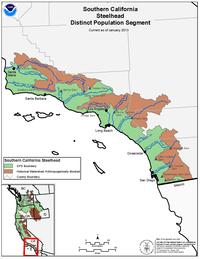
Photo from wikipedia
In large-scale pumping projects, such as mine dewatering, predictions are often made about the rate of groundwater level recovery after pumping has ceased. However, these predictions may be impacted by… Click to show full abstract
In large-scale pumping projects, such as mine dewatering, predictions are often made about the rate of groundwater level recovery after pumping has ceased. However, these predictions may be impacted by geological uncertainty-including the presence of undetected impermeable barriers. During pumping, an impermeable barrier may be undetected if it is located beyond the maximum extent of the cone of depression; yet it may still control drawdown during the recovery phase. This has implications for regional-scale modeling and monitoring of groundwater level recovery. In this article, non-dimensional solutions are developed to show the conditions under which a barrier may be undetected during pumping but still significantly impact groundwater level recovery. The magnitude of the impact from an undetected barrier will increase as the ratio of pumping rate to aquifer transmissivity increases. The results are exemplified for a hypothetical aquifer with an unknown barrier 3 km from a pumping well. The difference in drawdown between a model with and without a barrier may be <1 m in the 10 years while pumping is occurring, but up to 50 m after pumping has ceased.
Journal Title: Ground water
Year Published: 2019
Link to full text (if available)
Share on Social Media: Sign Up to like & get
recommendations!